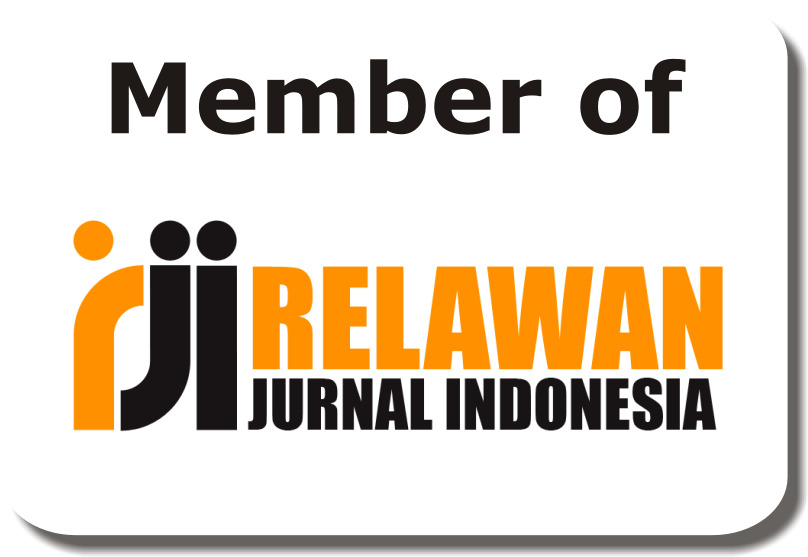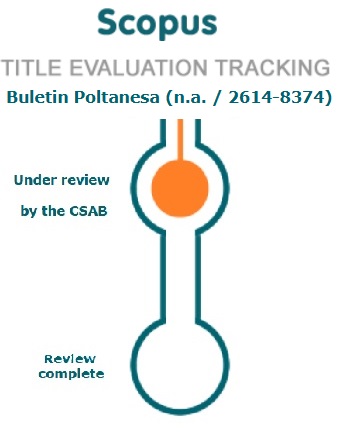Prohibition of Marriage Within Villages in a Review of Customary and Islamic Law
DOI:
https://doi.org/10.51967/tanesa.v26i1.3314Keywords:
Custom, Islam, Marriage, Prohibition, VillageAbstract
In Islam, the term mahram means a person who is forbidden to marry. Although Islam has determined it, in jorong Bandar Mas nagari Cubadak Pasaman district, there is a tradition of prohibiting marriage relations for reasons outside the provisions of shara', namely, a man is prohibited from marrying a woman who is still in the same village with the man. Therefore, the author is interested in conducting research with the type of qualitative research that aims to understand the prohibition of marriage in one village. The results showed that one village marriage in the version of the Bandar Mas jorong community is a pantang marriage. Kawin pantang in Minangkabau custom can be understood as a marriage that is prohibited by custom or a marriage that cannot be carried out or held based on the values agreed upon in custom. In Islamic law, women who cannot be married are called mahrams. Linguistically, the term mahram comes from the word haram, which means forbidden or not allowed. The prohibition of marriage in the same village is not known in Islam. Regarding the prohibition of marriage in the same village, a common ground can be found between the two. Customary law can be considered to strengthen Islamic law. Marriage with someone other than a relative will strengthen the offspring, as reported by the Companions and the opinion of Imam Ghazali.
References
Aaron Adhirajasa, dkk. (2024). Pandangan Hukum Islam Terhadap Hukum Adat Perkawinan Sesuku di Minangkabau. Jurnal Hukum Dan Kewarganegaraan, 3(12).
Al Amin, F., Syofiani, S., Rahmat, A., Novita, F., & Sandi, L. (2023). Larangan Pernikahan Sesuku di Minangkabau. Jurnal Ilmiah Langue and Parole, 7(1), 39–44. https://doi.org/10.36057/jilp.v7i1.615
Arisman. (2018). Mahram dan Kawin Sesuku Dalam Konteks Hukum Islam (Kajian Tematik Ayat-Ayat Hukum Keluarga). Jurnal Ilmiah Syari’ah, Volume 17 (Nomor 1, Januari-Juni 2018).
Dewi, N., & Nizam, A. (2023). Pernikahan Sesuku di Minangkabau. Proceeding Fakultas Ushuluddin, Adab Dan Dakwah IAIN Kerinci, 1(2), 49.
Erwansyah, E., & Ananda, F. (2024). Mahram dan Larangan Kawin Semarga Adat Batak Toba dalam Pandangan Hukum Islam. Innovative: Journal of Social Science Research, 4(1), 11938–11948.
Febria, R., Heryanti, R., & Sihotang, A. P. (2022). Kajian Hukum Perkawinan Adat Sesuku Di Masyarakat Minangkabau. Semarang Law Review (SLR), 3(1), 12. https://doi.org/10.26623/slr.v3i1.4774
Irzak Yuliardy Nugroho, Mufidah CH, & Suwandi. (2022). Pluralisme Hukum Dalam Tradisi Perkawinan Sasuku Pada Masyarakat Minang. Al-Manhaj: Journal of Indonesian Islamic Family Law, 4(1), 25–41. https://doi.org/10.19105/al-manhaj.v4i1.5722
Maulida, M. M. dan K. (2022). Perkawinan Sesuku Di Nagari Sikacua Tengah Kabupaten Padang Pariaman Dalam Perspektif Hukum Adat Minangkabau Dan Hukum Positif Indonesia. Jurnal de Jure, 14(Oktober), 21–32.
Nurchaliza, V. (2020). Tinjauan Hukum Islam Terhadap Larangan Kawin Tinjauan Hukum Islam Terhadap Larangan Kawin Sasuku Di Masyarakat Minangkabau Sasuku Di Masyarakat Minangkabau. Journal of Islamic Law Studies, 3(1), 5. https://scholarhub.ui.ac.id/jilsAvailableat:https://scholarhub.ui.ac.id/jils/vol3/iss1/5
Nurdin, R. (2022). Pertentangan antara hukum adat dengan hukum Islam dalam perkawinan: Studi kasus larangan perkawinan sesuku di Minangkabau. Pertentangan Antara Hukum Adat Dengan Hukum Islam Dalam Perkawinan (Studi Kasus Larangan Perkawinan Sesuku di Minangkabau).
Rahmadiah, N., F, M. W. F., & Kalijaga, U. I. N. S. (2024). Perkawinan Sasuku : Instrument Budaya Dalam Kajian Hukum Nasional. AL-AFKAR : Journal for Islamic Studies, 7(1), 980–987. https://doi.org/10.31943/afkarjournal.v7i1.910.Sasuku
Randa, P. (2024). Tradisi Larangan Pernikahan Semarga Dalam Suku Melayu Menurut Perspektif Hukum Islam (Studi Kasus Di Desa Tibawan Kecamatan Rokan IV Koto Kabupaten Rokan Hulu). Al Qalam: Jurnal Ilmiah Keagamaan Dan Kemasyarakatan, 18(1), 534–557.
Ronanda, Y., Munadi, M., & Usamah, U. (2023). Kawin Pantang pada Masyarakat Minangkabau Perspektif Hukum Keluarga Islam. Mahkamah: Jurnal Kajian Hukum Islam, 8(2), 154. https://doi.org/10.24235/mahkamah.v8i2.14560
Rosita Manalu, D. (2017). Perkawinan Satu Marga (Perkawinan Adat Batak Angkola Di Kecamatan Sipiro Kabupaten Tapanuli Selatan Utara). Jurnal Bimbingan Dan Konseling (E-Journal), 07(1), 53–60.
Sari, A. L. (2019). Larangan Pernikahan Sesuku Sekampung Sepucuk Adat Dikenagaraian Aia Manggih Kabupaten Pasaman Sumatera Barat. JOM Fakultas Hukum Universitas Riau, VI(2), 1–23.
Sari, I., & Rambe, S. (2024). Larangan Pernikahan Satu Marga pada Suku Pak Pak di Tinjau Perspektif Pendidikan Islam. Az-Zarnuji: Journal of Islamic Education (AJIE), 2(1), 87–94. https://journal.iainlangsa.ac.id/index.php/ajie
Setiawan, M. R., Amri, H., & Yunus, M. (2023). Analisis Hukum Islam Terhadap Sanksi Adat. Journal of Sharia and Law, 2(2), 470–484.
Undang-Undang Nomor 1 Tahun 1974 Tentang Perkawinan, (1974).
Yunarti, H. M. I. Z. S. (2025). Pertimbangan Kaum Adat Di Nagari Lasi Kecamatan Canduang Kabupaten Agam Tentang Larangan Kawin Sesuku Perspektif Hukum Islam. Jurnal Kritis Studi Hukum, 10(4), 62–72.
Yustim, Y., Nelisma, Y., Silvianetri, S., & Mazida, Y. (2022). Larangan Perkawinan Sesuku Dalam Budaya Minangkabau Dan Implikasinya Terhadap Konseling Budaya. Jurnal Sekretari Universitas Pamulang, 9(1), 8. https://doi.org/10.32493/skr.v9i1.18705
Zuhri, I. I. (2024). Wanita Yang Haram Dinikahi Menurut Al-Qur’an (Kajian Tafsīr Mauḍū‘ī). JURNAL AR-RISALAH Program Studi Hukum Keluarga Islam Pascasarjana IAIN Bone, 4(1), 55–65.
Downloads
Published
How to Cite
Issue
Section
License
Copyright (c) 2025 Buletin Poltanesa

This work is licensed under a Creative Commons Attribution-ShareAlike 4.0 International License.
The copyright of this article is transferred to Buletin Poltanesa and Politeknik Pertanian Negeri Samarinda, when the article is accepted for publication. the authors transfer all and all rights into and to paper including but not limited to all copyrights in the Buletin Poltanesa. The author represents and warrants that the original is the original and that he/she is the author of this paper unless the material is clearly identified as the original source, with notification of the permission of the copyright owner if necessary.
A Copyright permission is obtained for material published elsewhere and who require permission for this reproduction. Furthermore, I / We hereby transfer the unlimited publication rights of the above paper to Poltanesa. Copyright transfer includes exclusive rights to reproduce and distribute articles, including reprints, translations, photographic reproductions, microforms, electronic forms (offline, online), or other similar reproductions.
The author's mark is appropriate for and accepts responsibility for releasing this material on behalf of any and all coauthor. This Agreement shall be signed by at least one author who has obtained the consent of the co-author (s) if applicable. After the submission of this agreement is signed by the author concerned, the amendment of the author or in the order of the author listed shall not be accepted.








